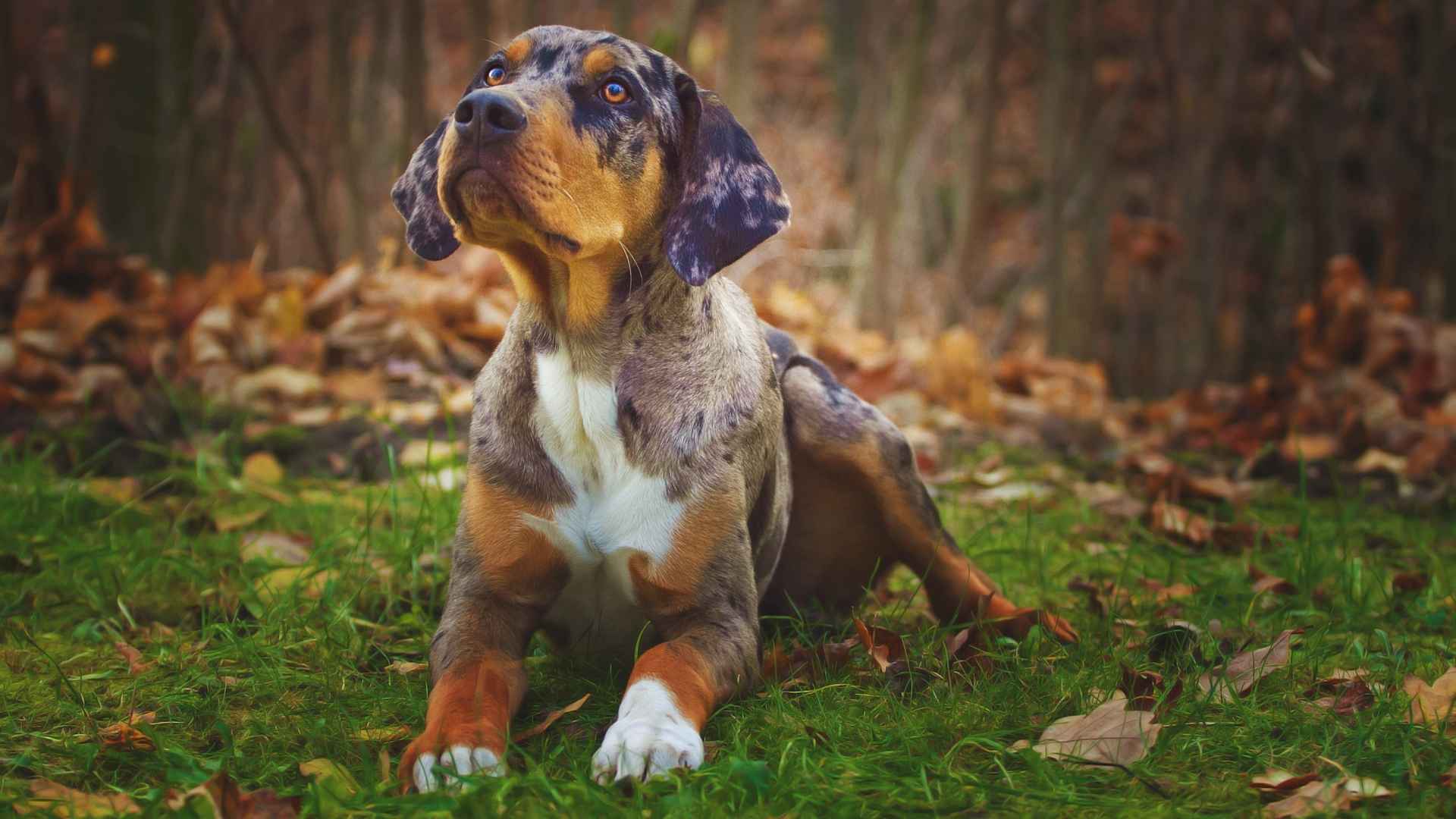There’s something about spotting a dog with a swirl of multiple coat colors—blues, reds, tans, whites—that stops you in your tracks. These rare, multicolor-coated dogs are more than just head-turners: they’re a glimpse into genetic heritage that’s increasingly unusual today.
Not all rare colorations are harmless. The ASPCA warns that “rare” or “exotic” coat patterns—especially those deliberately bred—can mask serious health risks, including deafness, eye defects, or immune problems. So those swirling hues aren’t just eye candy—they carry weight.
That’s why learning more about these dogs matters. Their coats are a story of genetics, history, resilience, and even caution. When you see one, you’re not just admiring fur—you’re witnessing living evidence of canine evolution and breeding choices.
Rare Multicolor Coat Dog Breeds
Here are the 7 dogs:
1. Catahoula Leopard Dog
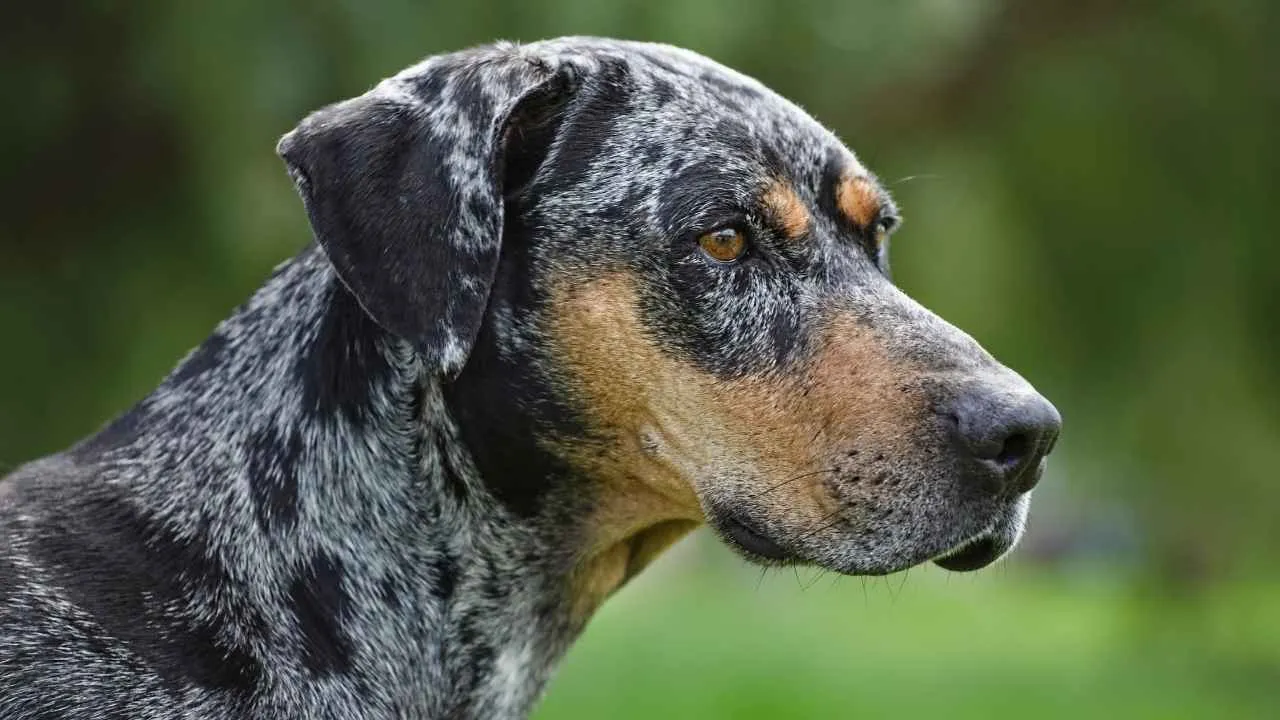
The Catahoula Leopard Dog (also called the Catahoula hog dog) lives up to its name with a rare multicolor coat that’s nothing short of mesmerizing.
Their short to medium-length coat can include up to five colors layered over a solid background, often with bold multicolored spots and white markings on the chest, legs, or face. These markings make them one of the most visually striking breeds in the dog world.
Eyes You Can’t Forget
According to Hill’s pet, Catahoulas are known for their “glass eyes”—a nearly white, pale blue shade that seems almost unreal. But the magic doesn’t stop there.
Amber, green, and blue tones are also common, and many dogs show two colors in one eye—a cracked or spotted appearance that adds to their unique charm. No two dogs look the same.
Built for Work, Not Couch Life
Originally bred in Louisiana for herding, hunting, and managing other animals, Catahoulas are all business when it comes to work. They excel in rugged environments and make fantastic partners for those who enjoy outdoor life and dog sports.
Not for the Inexperienced
These aren’t companion animals you can leave idle for long periods. Without structure, they can develop behavioral issues, including separation anxiety. They thrive under owners who are firm, consistent, and active.
2. Bergamasco Sheepdog
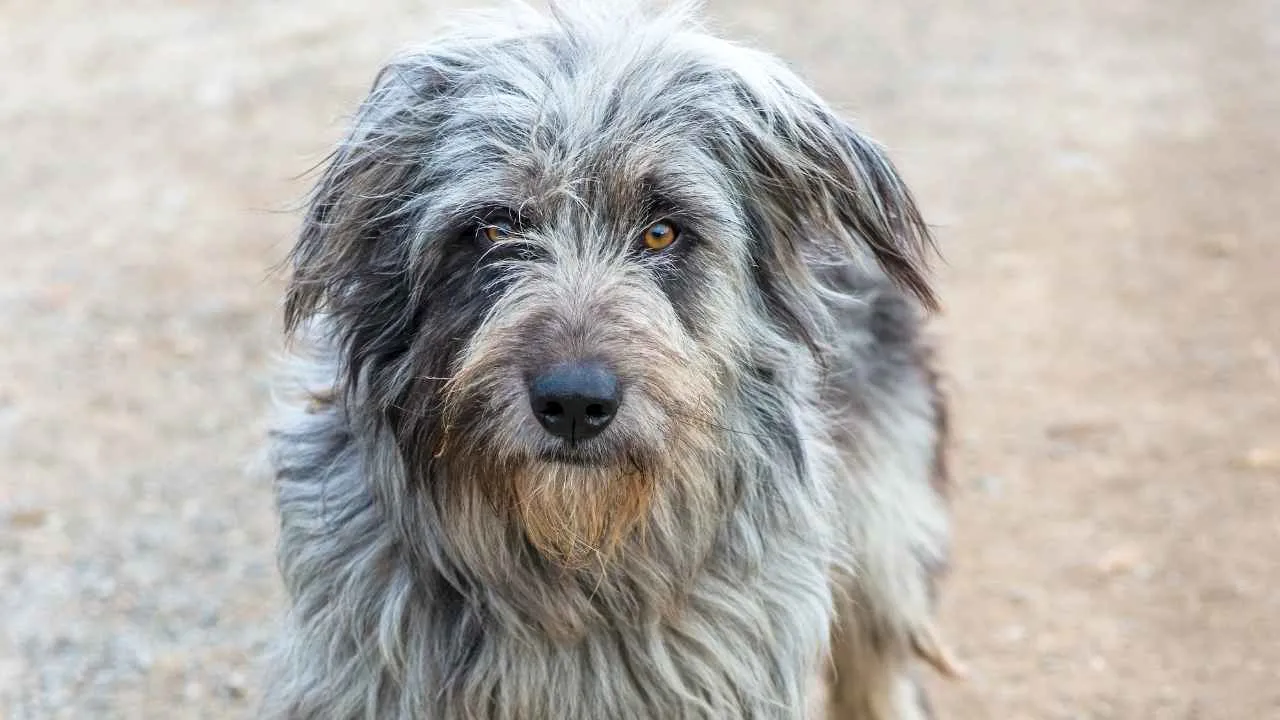
At first glance, the Bergamasco Sheepdog looks like it belongs in an art museum, not a backyard. This medium-sized dog from Italy is famous for its long, thick coat made up of natural mats called flocks.
These flocks aren’t tangles—they’re intentional. The coat types combine three different textures of hair that lock together into loose mats that hang like felted drapes over the whole body. Think goat-like ringlets with purpose.
A Coat That Works Overtime
The dense coat serves more than a style purpose—it protects the Bergamasco from harsh climates and predator bites, making it a true working herding dog. Despite the wild appearance, this rough coat is surprisingly low-maintenance once the flocking is fully formed.
It doesn’t shed much and only needs occasional grooming. The colors range widely—merle, cream, silver, fawn, gray, even white and black—often blending in a truly tricolor breed appearance.
Brought Back from the Brink
After World War II, the Bergamasco was nearly extinct. It was the work of passionate dog world enthusiasts and breeders that brought this striking breed back into circulation. Thanks to them, the Bergamasco thrives today not just as a farm helper but as a loyal companion animal.
Friendly, Focused, and Fiercely Loyal
These dogs are more than their coat. They’re highly intelligent, calm, and deeply bonded to their humans. They’re generally great with kids and other dogs, and while they might look a bit aloof at first, they’re eager to please and alert to protect.
They’re especially good for families looking for great family pets that don’t require constant brushing, though some daily brushing during early coat development may help.
3. Mudi
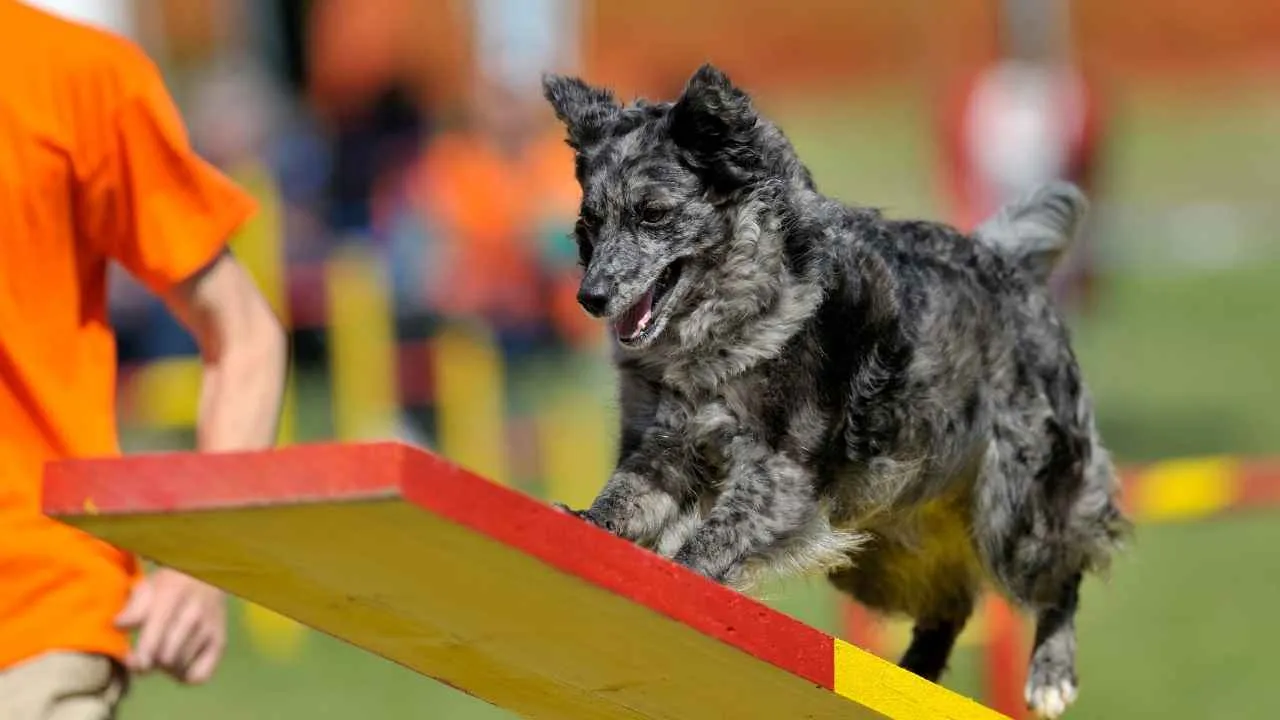
The Mudi (pronounced “moody”) may not be a household name, but it’s one of the most impressive medium-sized dogs in the dog world.
Originating in Hungary as a herding dog, the Mudi is built for agility, speed, and intelligence. This breed doesn’t just work hard—it plays smart. Whether competing in dog sports, tracking, or obedience, it thrives on challenge and action.
A Kaleidoscope of Coats
One of the most eye-catching features of the Mudi is its multicolored coat, often marked by a merle pattern or striking tricolor combinations. This curly coat is dense and typically forms soft waves across the back and tail.
Colors range from black, brown, white, and gray to stunning variations like blue merle, red merle, and even fawn with tan markings. Many Mudis have distinct colors in their coat and can even come from the same litter with drastically different looks.
Intelligence You Can’t Waste
Bred to herd sheep and cattle, it needs mental stimulation and a job to do. This isn’t a breed that’s content lounging all day. If left under-stimulated, it can easily develop anxiety or undesirable behaviors. Think puzzle toys, advanced obedience work, or regular outdoor adventures.
Loyal, Bold, and Surprisingly Versatile
This striking breed is known for its fierce loyalty and brave heart. Despite its size, the Mudi makes a fantastic watchdog, always alert and ready to respond. It’s also incredibly loving toward its family and often bonds closely with one person.
According to PetMD, with the right socialization, Mudis get along well with other dogs and children, making them great family pets for active households.
4. American Leopard Hound
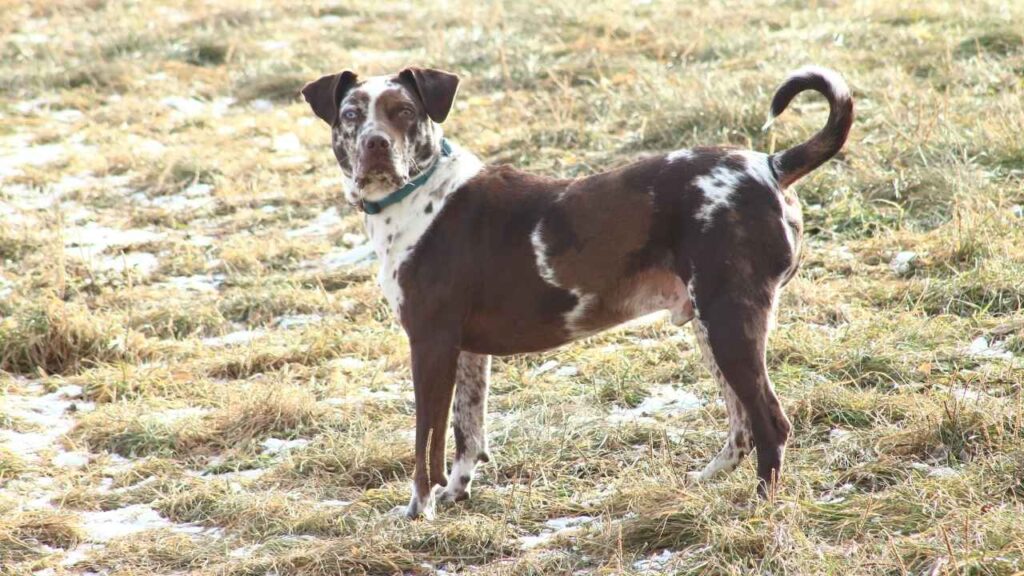
The American Leopard Hound is one of the most rugged and versatile hunting dogs in the U.S.—and one of the rarest dog breeds you’ll come across.
Originally bred to track and tree game across rough terrain, these dogs are all about endurance, determination, and loyalty. But here’s the thing: under all that grit is a soft spot for family. Known for forming strong bonds with their humans.
Spotted, Splashed, and One-of-a-Kind
When it comes to appearance, the American Leopard Hound earns its name. This multicolor coat dog typically features a striking merle pattern or leopard-like spotting that covers a solid base coat. Expect variations that include black and tan, red merle, blue mixed, and brown and white, often with bold white markings on the chest, face, and paws.
All Eyes on Their Eyes
These dogs don’t just have standout coats—their eyes can be just as dramatic. Some individual dogs display glass eyes similar to the Catahoula, or have one eye a completely different color from the other. Sometimes, even the same eye shows two tones, giving this breed an even more distinct color profile.
Tough Outside, Tender Inside
As a working breed, the American Leopard Hound is confident, focused, and thrives with structure and purpose. They need daily activity, both physical and mental.
Whether it’s a long hike, scent training, or playing fetch in a big backyard, this breed won’t be happy without a job. But once the day’s work is done, they’re just as eager to relax at your feet.
5. Entlebucher Mountain Dog
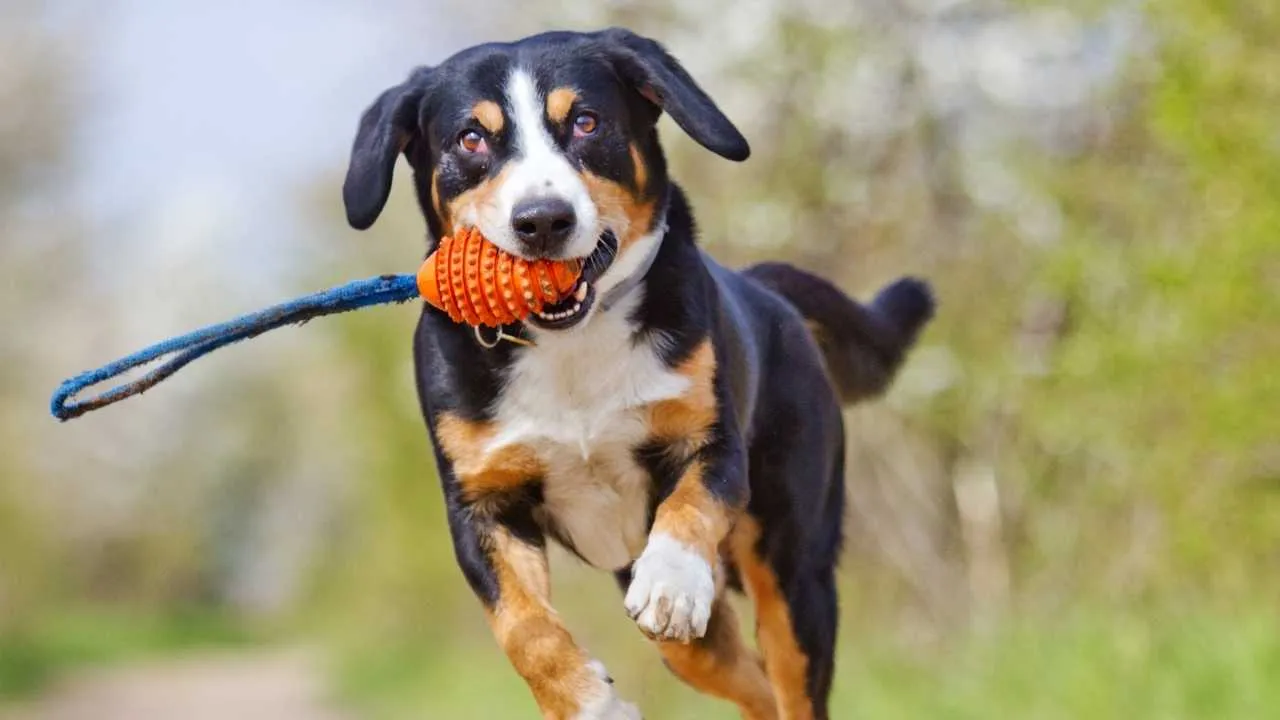
The Entlebucher Mountain Dog (pronounced ENT-leh-boo-cur) is the smallest of the four Swiss Mountain Dogs—but don’t mistake compact for meek. This rare dog is all muscle, heart, and smarts.
Originally bred to herd and guard livestock in the Alps, the Entlebucher is highly intelligent, energetic, and deeply loyal to its family. While they’re not yet mainstream, many owners in the know swear by this dog’s work ethic and devotion.
Coat That Shines—Literally
The Entlebucher sports a thick double coat that includes a dense undercoat and a smooth coat on top. It’s sleek, weather-resistant, and has a shiny coat that practically gleams in the sunlight.
Their markings are very specific to the breed standard—a classic tricolor breed look with black as the base, and sharply defined tan markings and white markings on the chest, paws, and face. It’s not just eye-catching—it’s genetically distinct.
Big Dog Energy in a Medium Frame
Though technically medium-sized, this dog has all the confidence and stamina of large dogs. The Entlebucher was originally bred to tackle rugged mountain terrain, herd cattle, and protect property—so don’t be surprised by its bold personality and strong work ethic.
Not for the Faint of Schedule
This is not a low-maintenance couch dog. Daily activity, mental stimulation, and social interaction are essential. They’re perfect for active families, especially those with outdoor space and time to devote. With the right training and outlet, the Entlebucher offers a huge range of skills—from obedience to therapy dog.
6. Drever
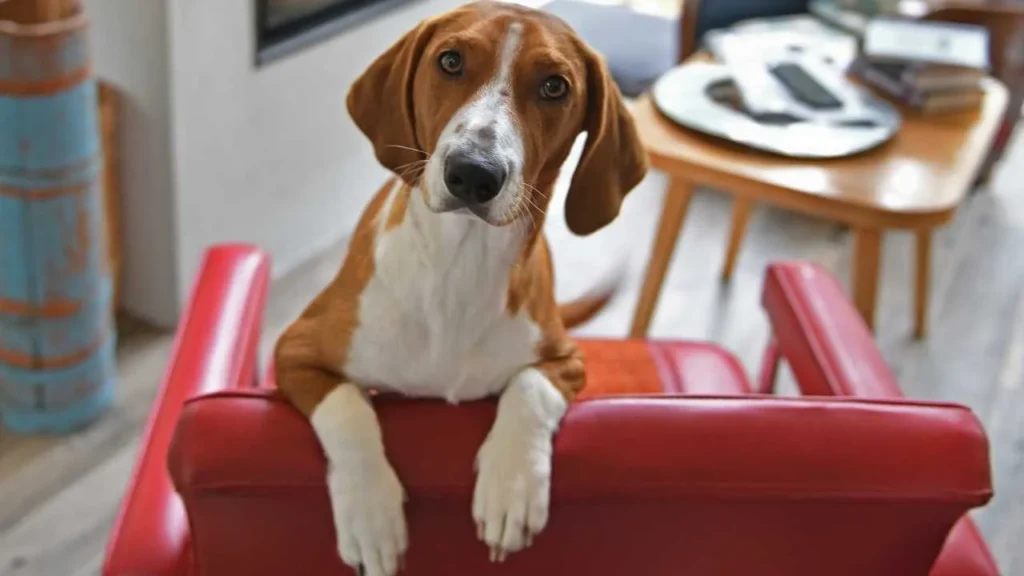
The Drever is a breed you probably haven’t run into at the dog park—and that’s not by accident. This rare dog from Sweden is uncommon outside of Scandinavia, but it holds a strong place in Swedish hunting circles.
Built long and low to the ground, this scent hound was bred to trail deer with slow persistence and a loud, melodic bark that hunters could track across great distances.
Multicolored Coats That Turn Heads
One of the standout traits of the Drever is its multicolored coat, which typically combines white with shades of black, brown, fawn, or red.
While some are solid or bi-colored, many display a combination of three colors, often in striking patterns across the body and face. Their short coat is dense and weatherproof—perfect for chilly hunts in the woods.
Long Body, Long History
The Drever may remind some of a Beagle-Dachshund cross, but it’s its own distinct breed with a legacy going back to the early 20th century.
Originally developed to adapt to Sweden’s rugged terrain and slower deer species, the breed balances endurance and agility in a compact frame. That long torso and strong, short legs give it stability and drive for hours of tracking work.
A Keen Nose and a Kind Heart
Drevers might be tough and task-oriented in the field, but at home, they’re affectionate, people-friendly companions. They’re great with kids, loyal to their family, and thrive on routine and engagement.
As long as they have a job—whether it’s hiking, scent games, or just daily walks—they’re content. This breed has a balanced temperament and makes a steady, low-key watchdog
7. Norwegian Lundehund
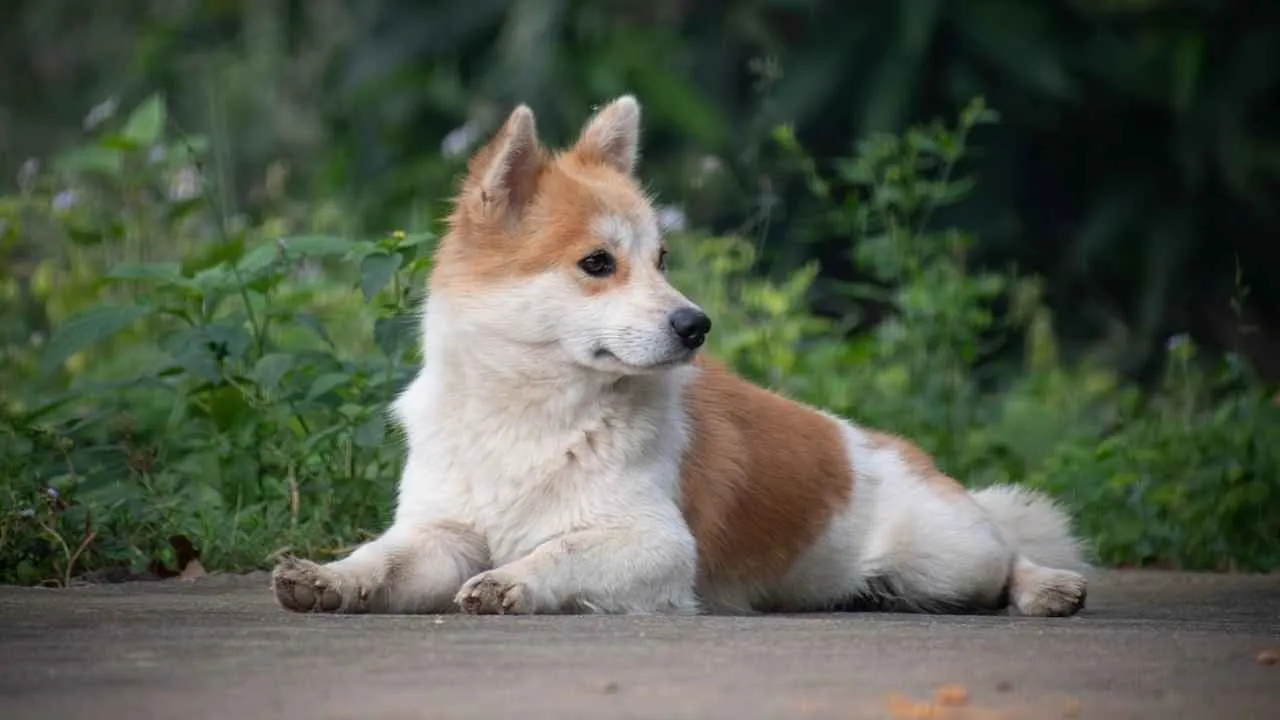
The Norwegian Lundehund is one of the world’s most unique and rare dog breeds. Originally bred to hunt puffins on the steep cliffs of Norway, this agile, small-to-medium-sized breed is like no other.
With six toes on each foot, highly flexible joints, and the ability to tip its head backward until it touches the spine, the Lundehund evolved for one job: navigating narrow caves and slippery rocks in search of seabirds.
Unique Coloring That Shifts Over Time
This breed’s coat adds to its intrigue. The multicolor coat usually includes combinations of white, reddish-brown, fawn, and gray, often with dark patches. While puppies may appear lighter, they tend to develop more black-tipped hairs as they age, creating a dynamic, shifting appearance.
Though some may look like they have the same color across their back, closer inspection reveals nuanced transitions that make every Lundehund visually distinct.
Built for the Wild, Adaptable to Home
Don’t let the adorable face fool you—this breed is all about function. The Lundehund’s extraordinary agility comes from thousands of years of environmental adaptation. It’s one of the only breeds that can fold its ears shut (to block debris) and flex its shoulders like a cat.
Sensitive Souls Who Thrive on Routine
Lundehunds tend to bond closely with their families and can be cautious with strangers. They’re playful, alert, and curious, but also sensitive and routine-driven. Big changes in environment or routine can throw them off, so they do best with consistent schedules and gentle, positive training methods.
Conclusion
Rare multicolor coat dog breeds are more than just eye-catching companions—they’re walking works of genetic art. From the dappled patterns of merle dogs to the layered beauty of a silky coat draped over a dense outer coat, each breed tells a story through color and texture. Whether you’re drawn to the unpredictable hues of a tricolored dog or the crystalline blue eyes that often accompany the merle gene, there’s no denying the visual intrigue these breeds bring.
It’s important to remember that while their coats may be striking, they also come with unique care needs, and in some cases, genetic considerations. For example, breeding two merle dogs together can lead to serious health issues, which is why responsible breeding and education matter just as much as admiration.


